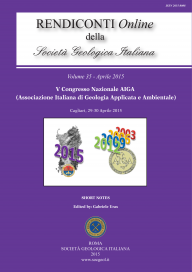
Comparison between vertical re-injection wells and commercial gabiondrains as warm water dispersers in an Open-loop Groundwater Heat Pump plant
Stefano Lo Russo (1), Glenda Taddia (1) & Elena Cerino Abdin (1)
(1) Department of Environment, Land and Infrastructures Politecnico di Torino, corso Duca degli Abruzzi, 24,10129 Turin, Italy E-mail: stefano.lorusso@polito.it
Volume: 35/2015
Pages: 184-187
Abstract
Open-loop groundwater heat pump (GWHP) technology has experienced increased implementation throughout several parts of the world. Water is discharged into an aquifer for cooling and heating buildings, which has the potential to cause, even in the short term, significant environmental impacts associated with groundwater thermal interference, particularly in shallow aquifers. The objective of this study was to investigate alternatives to traditional drilled wells for re-injection and dispersion of water in aquifers downstream of GWHP systems. In particular, we evaluated the potential for reverse use of commercial gabion draining in various types of ground configuration, geometry, and interconnection with prefabricated vertical drain systems. Results showed the use of gabiondrains instead of re-injection wells tended to develop a Thermal Affected Zone (TAZ), which primarily affected the surficial portion of the aquifer. TAZ development served an important role in decreasing thermal feedback risks, and reduced the relative distance between abstraction and re-injection in well-doublet schemes, in cases where the abstraction occurred in deeper portions of the aquifer.
Keywords
FEFLOW, Gabiondrain, Groundwater Heat Pumps (GWHP), Injection systems, Italy, Thermal Affected Zone (TAZ).
Get Full Text